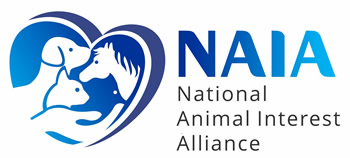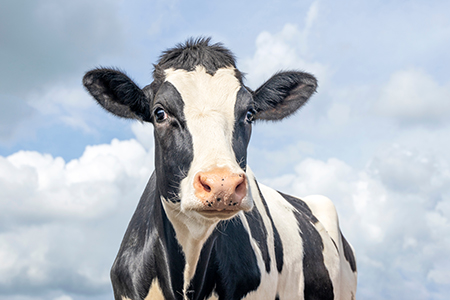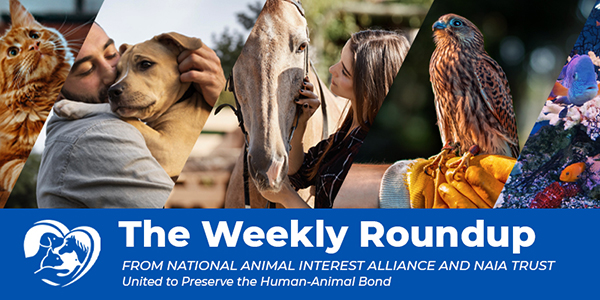
Inside This Issue:
- We're Gonna Try Lobster Farming... Again
- Chaos and Rebellion Reign at Indiana Shelter
- Collect Animal Eclipse Observations... For Science!
- Avian Influenza Detected in Dairy Cattle. Who's Next?
- Another Day, Another Anti-Farm Initiative
Lobster Farming... Again?
Japanese researchers from Hiroshima University are looking to crack the code on lobster farming, something that has bitterly eluded the seafood industry for over a century. Lobster aquaculture involves the cultivation of lobsters in controlled environments such as tanks, ponds, or cages. While it's technically feasible, lobster farming is far more complex than farming fish or shrimp.
One of the main challenges is the complex life cycle of lobsters. They have a larval stage that is planktonic and highly susceptible to environmental conditions. But marine biologist Kaori Wakabayashi was able to observe that these larvae, called phyllosomata, are capable of feeding on jellyfish – even highly toxic ones – and growing into healthy adults. This development is encouraging in that farming lobsters could ease the strain on wild caught populations and further, reduce harmful jellyfish blooms. No lobsters could be reached for comment on this development, though they are reportedly less enthusiastic than the scientists.
Lobster farming secrets unraveled after 120 years of repeated failures
Resources
★ (2023) Why don’t we farm lobster?
★ (2017) Rock Lobster From a Farm Could Soon Be Coming To a Menu Near You
Chaos and Rebellion Reign at Indiana Shelter
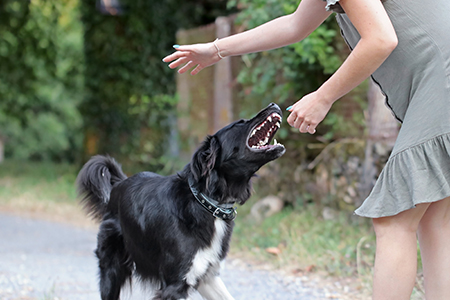
A Poor Match
Indiana’s largest nonprofit animal shelter, IndyHumane, is facing turmoil and revolt, pitting the shelter’s CEO, Donna Casamento, against, well… pretty much everybody.
Sheltering animals can be stressful work even during the best of times. And IndyHumane, following a brutal string of resignations and firings, budgetary issues, program cuts, and what is described as a “dog overflow,” is certainly not experiencing the “best of times” right now. So perhaps it is inevitable that frustrations from former board members, staff, volunteers, and supporters have boiled over into a rare, full-on public censure.
Much of the criticism is aimed at the CEO personally. But while we understand the importance of interpersonal skills in leadership, there’s a lot of subjectivity in judging this kind of thing. Plus, we don’t know her from Adam – so we won’t focus on that. There are two complaints that are worth repeating, though, both of which involve the shelter’s operation: claims that dogs are being matched with unsuitable homes just for the sake of clearing up space; and that dogs are being unnecessarily euthanized.
The first complaint brings up an excellent point. If a rescue’s approach is essentially “Take a dog, any dog!” without properly preparing the dog and vetting the potential adopter, the odds of an unhappy match – and the dog being returned or surrendered somewhere else – are much higher (there are also numerous safety issues with this approach that should be obvious). We do agree that numerous rescue organizations, especially in the 2010s, made the adoption process overly difficult and intrusive for potential adopters, but let’s not throw the baby out with the bathwater! Thoughtful placement is still a vital part of ensuring the best outcome for pets and their adopters. Ignoring that, just to get a dog out of a kennel today, is short sighted and ultimately self-defeating.
The second complaint in our view, doesn’t highlight a problem at IndyHumane so much as a troubling philosophical outlook held by some of the more, shall we say, highly engaged folks involved in animal rescue. In this case, the dogs in question bit two children (one on the face) and an owner’s hand, killed another dog, and terrorized other household pets. An argument can be (and has been) made that these dogs wouldn’t have been in a position to cause harm with proper vetting and matching. And for at least some of them, that is probably the case. But the bottom line is that if a dog is returned for biting a child in the face, the shelter has a public safety duty to put the dog down. Focusing one’s time and energy on saving dogs with known aggression issues, especially when the shelter says it is overflowing with other dogs, is a strange and counterproductive method of prioritizing. It also has numerous ways of – pardon the seriously unfunny pun – coming back to bite you.
'Utter chaos' alleged at IndyHumane as staff rebels against pet shelter's leader
Resources
★ Williamstown animal rescue under state investigation, owner says animals are safe and healthy
★ Days after shelves were nearby empty, donors deliver for North Haven animal shelter
Collect Animal Eclipse Observations... For Science!

Don't Stare.
Those in the path of totality for next Monday’s solar eclipse are asked by NASA to take part in a citizen science project. Eclipse viewers can contribute to the project Eclipse Soundscapes by detailing the following: recording data, analyzing audio, or submitting your own observations on how the event affects animals, then submit it here. Scientists are fascinated by animals’ reactions to eclipses – they aren't expecting a blackout in the middle of the day, and for many animals, it definitely shows!
While animals acting strangely during eclipses is common knowledge (it’s been reported since the dawn of recorded time) there has been precious little scientific research on this phenomena, and chances to observe behavior and collect data are a rare treat. Researchers are hoping to obtain data about all types of different animals as the stages of the eclipse progresses throughout the afternoon. As for us at NAIA, Vanessa will be within the path of totality and participating in the data collection!
How do animals respond to eclipses? Help NASA find out.
Resources
★ Submit your observations here!
★ Some perplexing animal mysteries stumped scientists during the 2017 eclipse. Here’s why
Avian Influenza Detected in Dairy Cattle. Who's Next?
We touched on a few cases of highly pathogenic avian influenza (HPAI) jumping to cattle last week. This week, it is known to be affecting cows from a dozen herds throughout six states.
It’s not a surprise – this virus has already infected mammals, including a few humans. While troubling, HPAI isn’t proving deadly for cows the way it does for poultry and some wild birds, and jumps have been rare. The fear is that the virus will inevitably jump to pigs. Swine possess receptors for both human and avian type influenzas and could effectively act as a mixing bowl for both viruses. If that happens, it’s pandemic time again.
Many scientists feel it is not a matter of “if” but “when” a major outbreak in livestock – or even humans – occurs. This means it is important to take whatever reasonable precautions we can in order to keep ahead of the virus: biosecurity measures, improved reporting and coordination, emergency vaccine stockpiles, and most especially, maintaining trust and lines of communication with farms and farm workers.
Now that bird flu is spreading among cows, scientists worry where H5N1 will jump next
Resources
★ (USDA) Detection of Highly Pathogenic Avian Influenza in Dairy Herds: Frequently Asked Questions
★ Human infection with avian influenza A(H5) viruses
Another Day, Another Anti-Farm Initiative
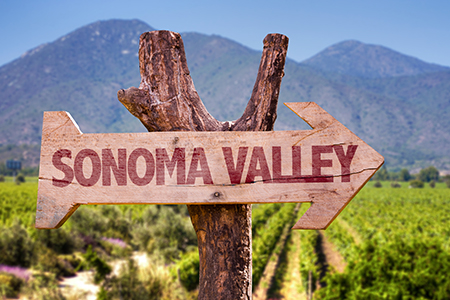
Start with the low hanging fruit and move up from there.
In Sonoma County, California, animal rights activists have gathered 37,000 signatures in an attempt to shutter the county’s larger farms. Keep in mind this is taking place in a state that has already passed numerous strict regulations affecting how farmers care for their livestock, and in an area renowned for “idyllic farms.” But of course, the hits from activists keep coming. Let this serve as your weekly reminder that these folks are less interested in improving animal welfare for livestock than chipping away at animal agriculture until it no longer exists at all. Also, note that some of the supporters of this initiative aren’t even activists, but smaller farmers in the area. Talk about short-sighted! Folks, the enemy of your competitor is definitely not your friend.
The Sonoma County Farm Bureau and California Poultry Federation are, bless their hearts, calling this initiative out for what it is, and exclaiming what it means for the future of animal agriculture. But, of course, the idea that animal rights extremists are employing dishonest tactics while working incrementally toward eliminating all animal agriculture sounds kinda whacky to people who aren’t intimate with these issues – and these people sign petitions.
Meanwhile, the county board has until the end of this month to figure out how they go forward with this initiative. Tick-tock!
Groups seek to ban large-scale animal farming in Sonoma County
Resources
★ CA local ballot initiative could decimate ag statewide
★ Update on Proposed 2026 Ban on Hunting, Fishing, and Trapping, which Will Also Effectively Ban Farming and Ranching
Also in the News...
★ Board doesn't go to the dogs, cats, rabbits, birds, fish, hamsters or gerbils (Rentals & Pets; Fur Bans; Pet Store Bans)
★ Botswana Vows To Send Elephants To Germany In Hunting Row (The Standoff Continues; Original 10K Elephant Threat Escalated)
★ Forget Bats And Rats, This 'Animal' Spreads More Viruses Than Any Other (Anthroponosis: The Most Dangerous Game)
★ French couple who kept 159 cats banned from keeping pets (168 Animals in 861 Square Feet)
★ Colorado wolf that killed calf this week was one of reintroduced animals, wildlife officials confirm (When Wolves Wolf, Surprising No One)
★ Thousands of dollars coming to animal shelters in Monroe and Orleans County (Shelters & Rescues; Kennel Upgrades, Storage, HVAC, and More!)
★ Animal advocates outraged over light post fixtures to keep ospreys from nesting in Nashua (Deterrents & Attractants)
Click here to see what is happening legislatively
